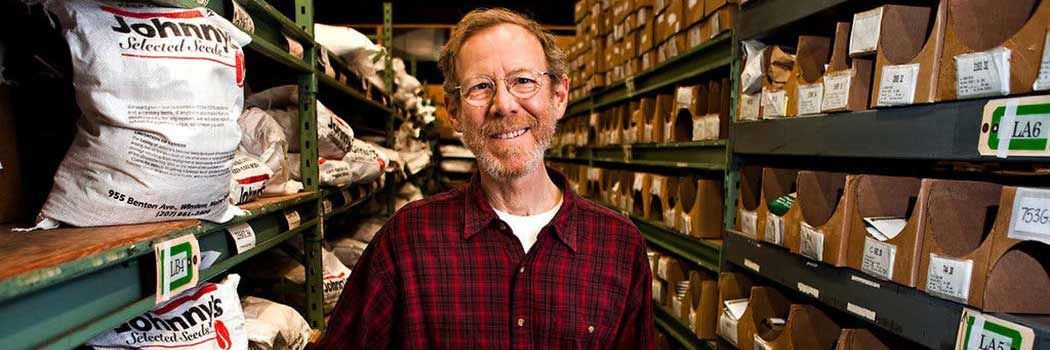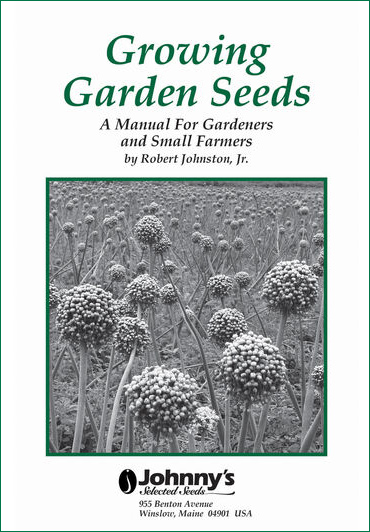- Chamomile Rake | Rust Prevention & Removal | Tech Sheet (PDF)
- Highbush Blueberry Rake | Maintenance, Rust Prevention & Removal | Tech Sheet (PDF)
- Baby Leaf Harvester | Instructions for Safety, Assembly, Operation & Maintenance | Tech Sheet (PDF)
- Carrot Harvesting, Handling & Storage | Carrot Growing Guide
- CoolBot–Air Conditioner Compatibility | Use, Temperature, Cooler Size & Insulation + Brand Recommendations | Tech Sheet (PDF)
- CoolBot | How to Build a Walk-in Cooler for Your Small Farm (PDF)
- CoolBot | Instruction Manual & Troubleshooting Guide (PDF)
- CoolBot Pro | Quick-Start Guide (PDF)
- CoolBot Pro | Spec Sheet (PDF)
- Cut-Flower Harvesting & Post-Harvest Care | Best Practices from Pros in the Slow Flower Community
- Getting Started with Value-Added Foods & Farm Goods
- Cooling & Storing Chart for Freshly-Harvested Summer Produce
- Salanova Lettuce | Cutter Tool | Tech Sheet (PDF)
- Seed Storage Guidelines | Charts & Notes on Longevity for the Beginning Seed-Saver
- Classic Storage Crops | Post-Harvest Handling & Storage Guidelines
- Video: CoolBot® | Installation Instructions & Recommendations
- Video: CoolBot PRO | Installation Instructions & Recommendations
- Video: Sauce Master II Fruit & Vegetable Strainer | Quick Demo
- Video: Using Blanching Caps to Blanch Frisée (Chicory) in the Field at Satur Farms
- Video: CoolBot PRO | Tutorial with Jean-Martin Fortier
- Video: The Procona System for All-in-one Flower Harvest, Transport & Display
- Video: Baby Leaf Harvester for Greens, Mesclun, Spinach, Lettuces & Tender Aromatics
- Video: Gorilla Tubs® (formerly known as TubTrugs®)
- Video: Johnny's Harvest Knives, Machetes & Sharpeners
- How to Set up a Winter Cool Room | CoolBot® + Inkbird + Space Heater
- Video: Tips & Recommendations for Dried Flowers • Tutorial with Joy Longfellow
- Chrysal Clear Bulb Flower Conditioner | SDS
- Chrysal Clear Universal Flower Conditioner | SDS
- Chrysal CVBN Flower Conditioner | SDS
- Chrysal Professional 2 Transport & Display T-Bag | SDS
- Chrysal Professional 1 Hydration Solution | SDS
- Video: Choosing & Growing Paste Tomatoes for Sauce-Making • with Niki Jabbour
- Chrysal Clear Bulb T-Bag | Cut-Flower Conditioner | SDS
- Chrysal Professional 3 Vase Solution Powder | SDS
- Chrysal Classic Professional 2 Transport & Display (Holding) Solution | SDS

Seed Viability & Seed Storage Guidelines
Photo credit: Craig Dilger for The New York Times
Simple Charts and Notes on Storage & Longevity for the Beginning Seed Saver
Interested in saving seeds? You need not build a climate-controlled warehouse or start a seed company to try your hand — it's a global, ancestral practice. But there are some caveats for success, relating to the crop, seed condition, timing, and storage conditions…
Storing Seeds
The seeds of many — though not all — commonly grown crops will remain viable in storage for one to several years if stored under optimal conditions — namely, cool and dry, with low temperature (42°F or 5.6°C) and low percent humidity. A simple rule of thumb is that the sum of the temperature (°F) and percent relative humidity should be less than 100.
The actual storage life, however, will depend upon the viability and moisture content of the seed when initially placed in storage, the specific variety, the conditions of the storage environment over time, and other variables.
As a simple way to store seeds for gardeners and farmers, we suggest keeping seeds in a sealed glass jar in the refrigerator. Be sure to label the jar with crop, storage entry date, and any other info you may find useful or of interest later on. For best results, include a desiccant in the jar. When retrieving seeds from storage, allow the container to reach room temperature before opening it. This will help prevent condensation from forming on the seed surface and inside the container.
How to Test Seed Viability
If your seeds have been stored for any length of time, you may wish to test a sample of the seeds to see if they still germinate well. Place some seeds between two damp pieces of paper towel, enclose them in a zip-lock sandwich bag, and place the bag in a temperature-controlled environment suited to the variety's specific germination requirements. (Refer to the packet back or the product page on our website for optimal germination temperature range.) After several days — or longer for slow-to-germinate varieties — check to see how many of the seeds have germinated.
Viability vs. Germination
Both germination rate and seed viability can decline with age of the seed. Viability refers to a seed's ability to produce a vigorous seedling. Seed viability typically declines before germination rates do, so it is possible for old seed to still germinate yet produce weak seedlings.
About our Seed Storage & Viability Charts
- The charts below reflect an average range derived from our experience and data gathered from expert sources (see References & Further Reading).
- Your results may vary from ours, depending upon environmental variables and the condition of the seed prior to storage.
- Please also note that all data shown here are for raw seed. Pelleted seed, regardless of variety, should be used within one year, as the pelleting process diminishes seed longevity.
Farm Seed & Cover Crop Seed Storage Chart
| Type | Avg Storage Life (Yrs) | Type | Avg Storage Life (Yrs) |
|---|---|---|---|
| Alfalfa | 2–5 | Rapeseed | 3–5 |
| Barley | 3–5 | Rye | 1–3 |
| Buckwheat | 2–5 | Sorghum | 1–2 |
| Cowpea | 5 | Sudangrass | 1–4 |
| Clover, Crimson | 5 | Vetch, common | 3–5 |
| Clover, White | 5 | Vetch, hairy | 5 |
| Millet | 1–2 | Wheat, common | 3–5 |
| Oats | 1–4 |
Vegetable Crop Seed Storage Chart
| Type | Avg Storage Life (Yrs) | Type | Avg Storage Life (Yrs) |
|---|---|---|---|
| Artichoke & Cardoon | 1–4 | Kohlrabi | 3–5 |
| Arugula | 6 | Leeks | 2–3 |
| Asian Greens | 3 | Lentil | 1–2 |
| Asparagus | 3–4 | Lettuce | 1–6 |
| Beans | 2–4 | Melon | 3–6 |
| Beets | 2–5 | Mustard | 4 |
| Broccoli | 3–5 | Okra | 2–3 |
| Brussels Sprouts | 3–5 | Onions | 1–2 |
| Cabbage | 3–5 | Parsnip | 1–3 |
| Cabbage, Chinese | 3–5 | Peas | 2–4 |
| Carrots | 3–4 | Peppers | 2–5 |
| Cauliflower | 4–5 | Pumpkins | 4–6 |
| Celery & Celeriac | 3–5 | Purslane | 3–5 |
| Chicory | 4–5 | Radish | 4–5 |
| Collards | 3–5 | Rutabaga | 3–5 |
| Corn, Sweet | 1–3 | Salsify | 1–2 |
| Cress | 5 | Soybean | 3–5 |
| Cucumber | 3–6 | Spinach | 1–5 |
| Dandelion | 1–2 | Squash & Gourds | 3–6 |
| Eggplant | 4–5 | Swiss Chard | 2–5 |
| Endive | 5 | Tomato | 3–7 |
| Fennel | 3–4 | Turnip | 4–5 |
| Kale | 3–5 | Watermelon | 4–5 |
Herb Crop Seed Storage Chart
| Type | Avg Storage Life (Yrs) | Type | Avg Storage Life (Yrs) |
|---|---|---|---|
| Angelica | 2 | Lavender | 4 |
| Anise | 1–3 | Lemon Balm | 1–4 |
| Basil, sweet | 3–5 | Lemon Grass | 3 |
| Borage | 1–4 | Lovage | 1–3 |
| Caraway | 1–2 | Marjoram | 1–4 |
| Catnip | 3 | Mexican Mint Marigold | 4 |
| Chamomile | 4 | Mountain Mint | 4 |
| Chervil | 1–4 | Oregano | 4 |
| Chives | 1–3 | Parsley | 1–4 |
| Cilantro/Coriander | 1–4 | Rosemary | 1–4 |
| Cumin | 1–3 | Sage | 1–3 |
| Dill | 1–4 | Savory | 1–4 |
| Epazote | 3 | Thyme | 1–4 |
| Fennel | 1–2 | Valerian | 2–3 |
| Hyssop | 1–4 |
Fruit Crop Seed Storage Chart
| Type | Avg Storage Life (Yrs) | Type | Avg Storage Life (Yrs) |
|---|---|---|---|
| Melon | 3–6 | Strawberry | 5 |
| Rhubarb | 1–2 | Watermelon | 4–5 |
Flower Crop Seed Storage Chart
| Type | Avg Storage Life (Yrs) | Type | Avg Storage Life (Yrs) |
|---|---|---|---|
| Ageratum | 3–5 | Gomphrena (Globe Amaranth) | 3–5 |
| Agrostemma | 3 | Gypsophila | 2–4 |
| Alyssum | 3–5 | Hyacinth Bean | 3–5 |
| Ammi | 2 | Impatiens | 1–2 |
| Amaranthus | 4–5 | Larkspur | 1–3 |
| Aquilegia (Columbine) | 1–2 | Lavender | 1–3 |
| Artemisia | 1–5 | Lisianthus | 2–3 |
| Asclepias | 1 | Lupine | 3–5 |
| Aster | 1–2 | Marigold | 2–5 |
| Bachelor’s Buttons | 3–5 | Matricaria | 1–3 |
| Bells of Ireland | 2 | Monarda | 4 |
| Calendula | 4–6 | Nasturtium | 3–7 |
| Carnation | 3–5 | Nigella | 3–5 |
| Celosia | 2–4 | Pansy | 1–2 |
| Centaurea | 1–5 | Phlox | 1–3 |
| Coneflower | 1–2 | Poppy | 2–4 |
| Cosmos | 3–5 | Salvia | 1–3 |
| Dahlia | 2–5 | Saponaria | 2–5 |
| Daisy | 3 | Scabiosa | 2–5 |
| Delphinium | 1–3 | Snapdragon | 3–5 |
| Dianthus (Sweet William) | 3–5 | Statice | 1–2 |
| Didiscus | 1 | Stock | 4–5 |
| Digitalis | 1–2 | Strawflower | 1–2 |
| Dusty Miller | 3–5 | Sunflowers | 3–5 |
| Echinacea | 4 | Sweet Pea | 3–5 |
| Eryngium | 2 | Verbena | 1–5 |
| Eucalyptus | 4 | Viola (Pansy) | 1–2 |
| Euphorbia | 4 | Yarrow | 3–5 |
| Forget-me-Not | 2 | Zinnia | 2–5 |
Learn More

Johnny's Seed-Saving Resources
- » Growing Garden Seeds. First published in 1976 by Rob Johnston, Jr., this manual for gardeners and small-scale farmers covers 15 fundamentals for successful seed production, harvest, and storage.
References & Further Reading
- Andreu, A. 2003. Plant Data Sheet (Artemisia tridentata). University of Washington.
- Ashworth, S, D. Cavagnaro & K. Whealy. 2002. Seed to Seed: Seed Saving and Growing Techniques for Vegetable Gardeners, 2nd Edition. Chelsea Green.
- Deppe, C. 2015. 8 Seed-Saving Myths. Excerpt from The Tao of Vegetable Gardening. Chelsea Green.
- Ells, J.E., L.N. Bass & D. Whiting. 2013. Storing Vegetable and Flower Seeds. Colorado State University Extension.
- Justice, O.L. & L.N. Bass. 1978. Principles and Practices of Seed Storage. USDA.
- Kallio, A. 1979. Vegetable Gardening Hints. Agricultural Extension Service, University of Minnesota.
- Maynard, D.N. & G.J. Hochmuth. 2006. Knott's Handbook for Vegetable Growers, 5th Edition. Wiley.
- Mytty, M. 2003. Plant Data Sheet (Aquilegia formosa). University of Washington.
- Navazio, J. 2012. A Short History of Agricultural Seed. Excerpt from The Organic Seed Grower: A Farmer's Guide to Vegetable Seed Production. Chelsea Green.
- Pasian, C. 2015. Floriculture Crop Seed Quality and Seed-Handling. Ohio State University Extension.
- Rogers, M. & P. Alexander. 1990. Saving Seeds: The Gardener's Guide to Growing and Storing Vegetable and Flower Seeds (A Down-to-Earth Gardening Book). Storey Publishing.
- Seed Savers Exchange. 2017. Grow and Save Arugula Seeds.
- Tucker, A.O. & T. Debaggio. 2009. The Encyclopedia of Herbs: A Comprehensive Reference to Herbs of Flavor and Fragrance. Timber Press.

